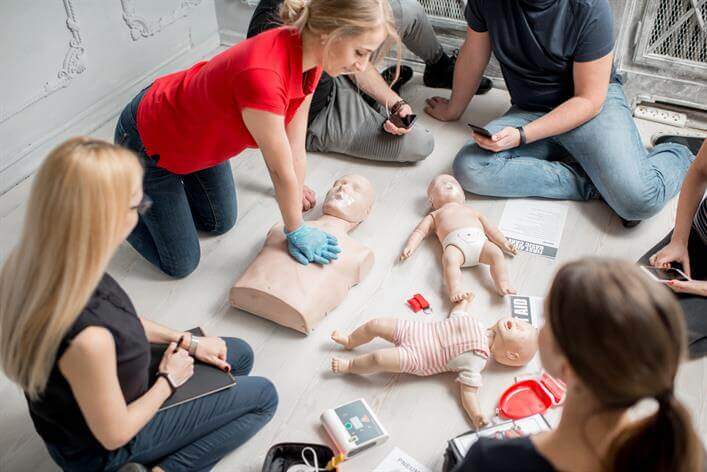The week of June 1-7 is CPR and AED Awareness Week. This is a time to focus on how lives can be saved if more Americans know CPR and how to use an AED. According to the Sudden Cardiac Arrest (SCA) Foundation, SCA is a leading cause of death in this country and most cardiac arrests happen at home. Would you know what to do if someone needed your help?
During this awareness week, The Red Cross is urging everyone to get trained! Check out these FAQ to learn more:
What is cardiac arrest?
Cardiac arrest occurs when someone’s heart suddenly stops functioning.
What is CPR/AED?
CPR stands for Cardiopulmonary Resuscitation and is an emergency lifesaving procedure done when the heart stops beating. An AED is an Automated External Defibrillator. The AED is a device that measures an unresponsive person’s rhythms and delivers an electronic shock to the individual in attempt to restart the heartbeat.
How much time do you have to save someone’s life once they enter cardiac arrest?
Every Second Counts!! Sudden cardiac arrest claims thousands of lives each year. The American Heart Association estimates about 90 percent of people who suffer out-of-hospital cardiac arrests die. Every minute without CPR or an AED decreases a victim’s survival chance. But when ordinary people, not just doctors and EMTs, are equipped with the skills to perform CPR or to use an AED, especially if performed immediately, it can double or triple a victim’s chance of survival.
Who should be certified?
The Red Cross recommends that households, businesses and schools receive training in CPR and proper use of an AED. This training can give them the knowledge and confidence to respond during an emergency situation with skills that can help save a life.
Where can I become certified?
CPR and AED classes are held throughout the year at various venues. The Red Cross offers several different opportunities to receive hands-on training from experienced instructors. You can sign up for a course here. Also, encourage your employer to have an on-site training class available for employees.
With some training and preparation, you can help make the difference for someone between life and death.

